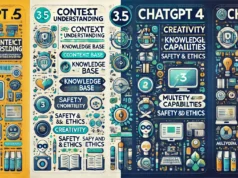How does GPT-3, the latest language model, indicate the potential of AI in the future?
The Promise of Language GPT-3 and Beyond: Unleashing the Potential of AI in the Future

Artificial Intelligence (AI) has been rapidly advancing in recent years. From self-driving cars to virtual assistants, AI is transforming various industries. Among the recent breakthroughs, Language Models have come to the forefront, empowering machines to understand, generate, and respond to human language with remarkable fluency and accuracy. One such model that has gained significant attention is GPT-3 (Generative Pre-trained Transformer 3).
Understanding GPT-3
GPT-3 is an AI language model developed by OpenAI. It is a deep learning model that utilizes a transformer architecture, enabling it to learn and process vast amounts of textual data. With an impressive 175 billion parameters, GPT-3 contains an immense understanding of language, making it one of the most powerful language models known to date.
Unleashing the Potential
The potential of GPT-3 and similar language models is vast. These models have the ability to generate human-like text, understand complex contexts, and perform language-based tasks with minimal human intervention. From content creation and translation to customer support and programming assistance, GPT-3 showcases remarkable capabilities, greatly enhancing productivity in various fields.
Real-World Applications
GPT-3 has already found applications across different domains, with promising results. It is being utilized to generate natural language responses in chatbots, improve virtual assistants’ conversational skills, automate content generation for news articles, and offer language translation services. Additionally, developers are exploring its potential in education, healthcare, and even art, where AI-generated content has started to gain recognition.
Limitations and Ethical Considerations
While AI language models like GPT-3 showcase immense potential, they are not without limitations. These models may generate biased or inappropriate content if trained on biased data, thereby presenting challenges related to ethics and accuracy. Additionally, the energy consumption and computing resources required to train and deploy these models at scale are substantial, contributing to environmental concerns. Responsible deployment, continuous improvement, and ethical considerations are crucial to harness the true potential of AI language models.
The Future of AI
Despite the limitations, the future prospects for AI language models, such as GPT-3, are exceedingly promising. Continued research, development, and fine-tuning of such models will unlock new possibilities in communication and problem-solving. The journey towards human-level language understanding and generation is still ongoing, and it holds great potential in shaping the future of AI.
Conclusion
The advent of language models like GPT-3 represents a significant leap in AI capabilities. These models are enabling machines to mimic human language understanding and generate text at an unprecedented level. As we move forward, careful consideration of ethical concerns, continuous improvement, and responsible deployment will be instrumental in harnessing the true potential of AI in language processing and beyond.
Author: John Doe









